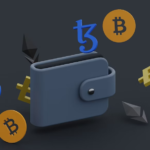In an era of fluctuating markets and uncertain investment returns, many individuals are turning to high-yield savings accounts (HYSAs) as a safe, flexible place to park cash while still earning meaningful interest. In 2025, several accounts are offering annual percentage yields (APYs) in the 4 % to 5 % range — a dramatic improvement over typical savings rates of recent years.
This article will help you understand what makes a good HYSA, highlight what rates you can expect right now, identify key features and pitfalls to look out for, and offer a short list of top contenders you might explore.
Why a high-yield savings account now?
The rate environment
The key reason HYSAs are attractive today is the elevated interest-rate environment. Many online banks are offering APYs of 4 % and above, which is substantially higher than the national average for traditional savings accounts.
For example, one recent review lists top accounts with up to 5.00% APY for certain balances or conditions.
Benefits of HYSAs
- Liquidity: Unlike certificates of deposit (CDs) or some investment vehicles, you can generally withdraw from a HYSA without penalty (though there may be transfer limits).
- Safety: Many accounts are FDIC-insured (in the U.S.) up to applicable limits — meaning you don’t assume market risk like you might with stocks.
- Better return than traditional savings: If your cash is sitting in a brick-and-mortar bank paying 0.01% or similar, moving it to a HYSA can earn you hundreds of dollars extra per year.
Realistic expectations
It’s important to recognise that while a HYSA gives you a solid return for “cash” in the bank, it is not a substitute for long-term investing where returns of 7-10%+ are historically possible. As one expert puts it: “This account isn’t for growing wealth but making sure accessible cash doesn’t lose purchasing power over time.”
Also, remember rates are variable. If interest-rates drop, HYSA yields often will too.
How to choose the best HYSA in 2025
Here are the criteria you should apply when evaluating accounts:
1. APY (Annual Percentage Yield)
Set your benchmark: as of mid-2025, competitive APYs are in the ~4%-5% range. Be sure you understand which balance thresholds apply (some rates apply only up to a certain amount, or require direct deposit).
2. Fees and minimums
Look for accounts with no monthly fees and no or low minimum balance requirements. High fees can quickly erode the benefit of a higher rate.
3. Access and convenience
Even though you’re using the account for savings, you still want convenient transfers, online/mobile access, good customer support, and a reputable bank.
4. Rate stability and conditions
Check whether the high APY has conditions (e.g., direct deposit, minimum balance) and confirm how often the rate can be changed. Because rates are variable, keep in mind they may drop.
5. Liquidity & withdrawal limits
Although “savings” implies access, there may still be federal or bank-imposed limits (for example, six withdrawals per month under U.S. rules).
6. Insurance / safety
Ensure the bank is FDIC-insured or backed by a similar guarantee. Even a high rate is not worth much if the institution’s standing is questionable.
What rates to expect in 2025
Here’s a snapshot of the rate-landscape for HYSAs around mid-2025:
- Top accounts offering up to ~5.00% APY for certain conditions or smaller balances.
- Many accounts clustered in the 4.00%-4.70% APY range.
- Some accounts with slightly lower yields (~3.50%-4.00%) but with simpler requirements.
- Traditional savings accounts still offering extremely low returns (0.01%-0.50%) in many cases.
For example, one article shows that if you deposit $10,000 in an account earning 4.30% APY, you could earn roughly $430 in one year — assuming the rate stays constant.
Top HYSA Features to Look For (and Avoid)
✅ Features you want
- No or low minimum balance requirement so your funds start earning interest immediately.
- Daily interest compounding, which adds up faster over time.
- Easy, fee-free transfers to and from your primary bank.
- Robust online/mobile app for monitoring and managing your account.
- Strong reputation and transparent terms.
❌ Features to be wary of
- A “high rate” that applies only up to a small balance or only with onerous conditions (direct deposit, linked checking, etc.).
- Hidden or monthly maintenance fees that reduce your net yield.
- A rate that appears high today but has obvious downward triggers.
- Poor customer service or lack of branch/online feel — even though you’re saving, you may sometimes need support.
- Excessive penalty or restriction on withdrawing funds when you need them most.
Sample HYSA Offers to Consider
To make the concept concrete, here are some accounts and features worth investigating (always check the banks’ current websites for updated terms, as rates change).
- Accounts offering up to 5.00% APY (often for balances up to a limit or tied to a checking account) are available.
- Some banks offer ~4.60% APY with no minimum balance requirement.
- Others offer ~4.30% APY with no or low deposit minimums.
Given the variability, a prudent strategy might be: open the account with the best rate you qualify for now, move your idle cash there, and then revisit periodically to ensure you’re still getting a competitive rate.
When to use a HYSA — and when not to
Good use-cases
- Emergency savings: A HYSA offers both yield and access.
- Short- to medium-term goals (saving for a down-payment in 1-3 years, for example).
- Parking cash while you decide on longer-term investment options.
Less suitable for
- Long-term growth-oriented investing: If your horizon is 10+ years, equities or balanced portfolios historically outperform savings alone.
- Inflation-only preservation: If inflation is running above your yield, your real purchasing power still may shrink slightly.
- Funds you need only for speculative investment: The purpose of a HYSA is safety + modest growth, not large upside.
Action Plan: How to Move Forward
- Check your current savings account rate — is it well below 3–4%? Many are at 0.01%.
- Compare a few HYSA offers using the criteria above (APY, minimums, fees, liquidity, bank reputation).
- Open the account you decide on and move the bulk of your idle cash there — especially funds you don’t need immediate access to or aren’t investing elsewhere.
- Set a calendar reminder (e.g., every 6-12 months) to review your rate. If it drops significantly, consider switching banks again.
- Don’t ignore the rest of your financial plan: emergency fund, diversified investments, retirement savings — a HYSA is one piece of a balanced picture.
Conclusion
Opening a high-yield savings account in 2025 is one of the smarter “safe moves” you can make with idle cash. With APYs in the 4–5% range available today, you’re earning meaningful returns without sacrificing flexibility or safety. But it’s not set-and-forget: because rates change and opportunities evolve, the key is to choose wisely, stay vigilant, and integrate the HYSA into your broader savings and investment strategy.
If you haven’t already, explore current offers, open a competitive account, and redirect the cash that’s otherwise languishing in low-yield accounts. Your future self will thank you. Subscribe for updates or check back regularly to stay ahead of rate-shifts and strategies.










